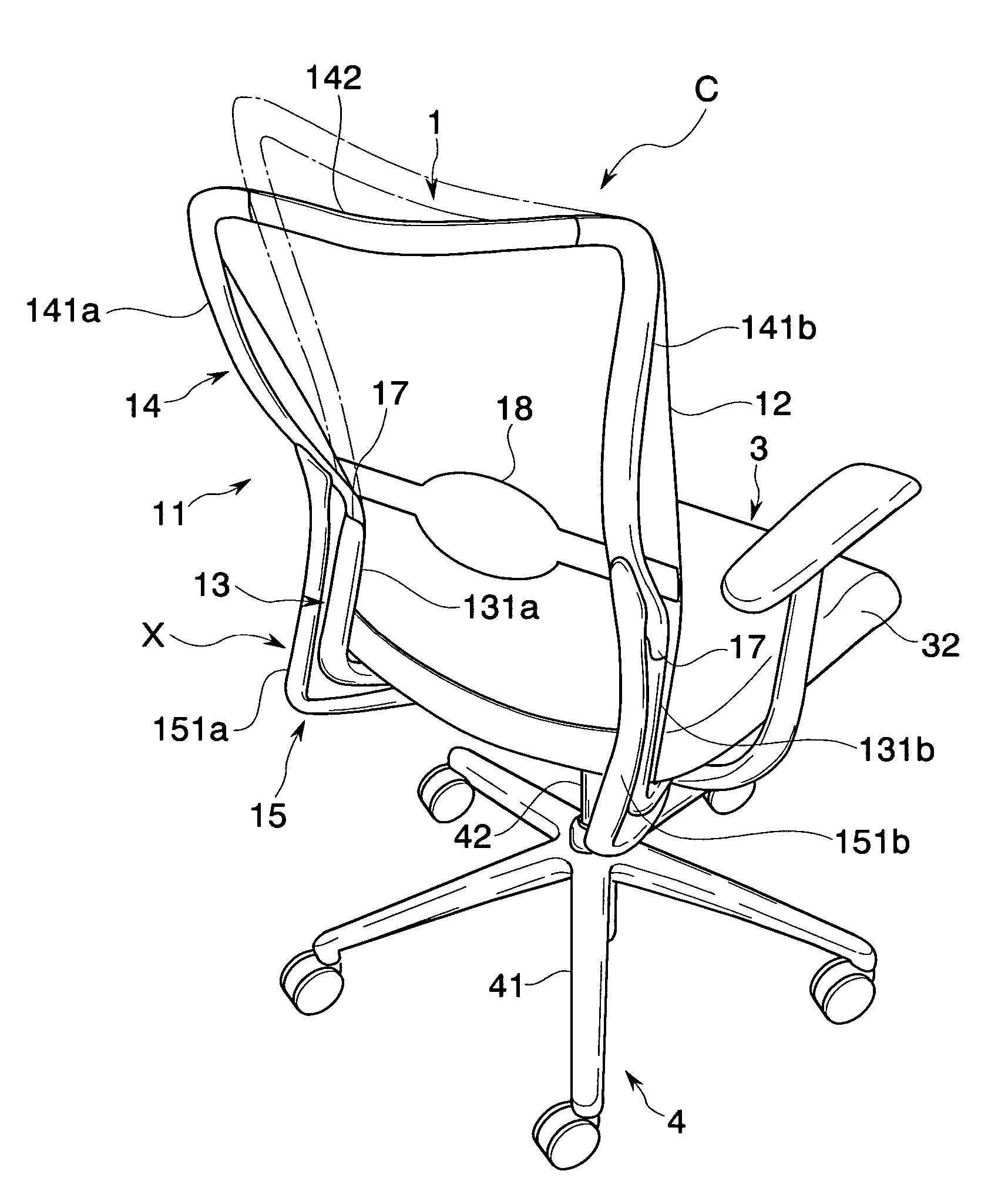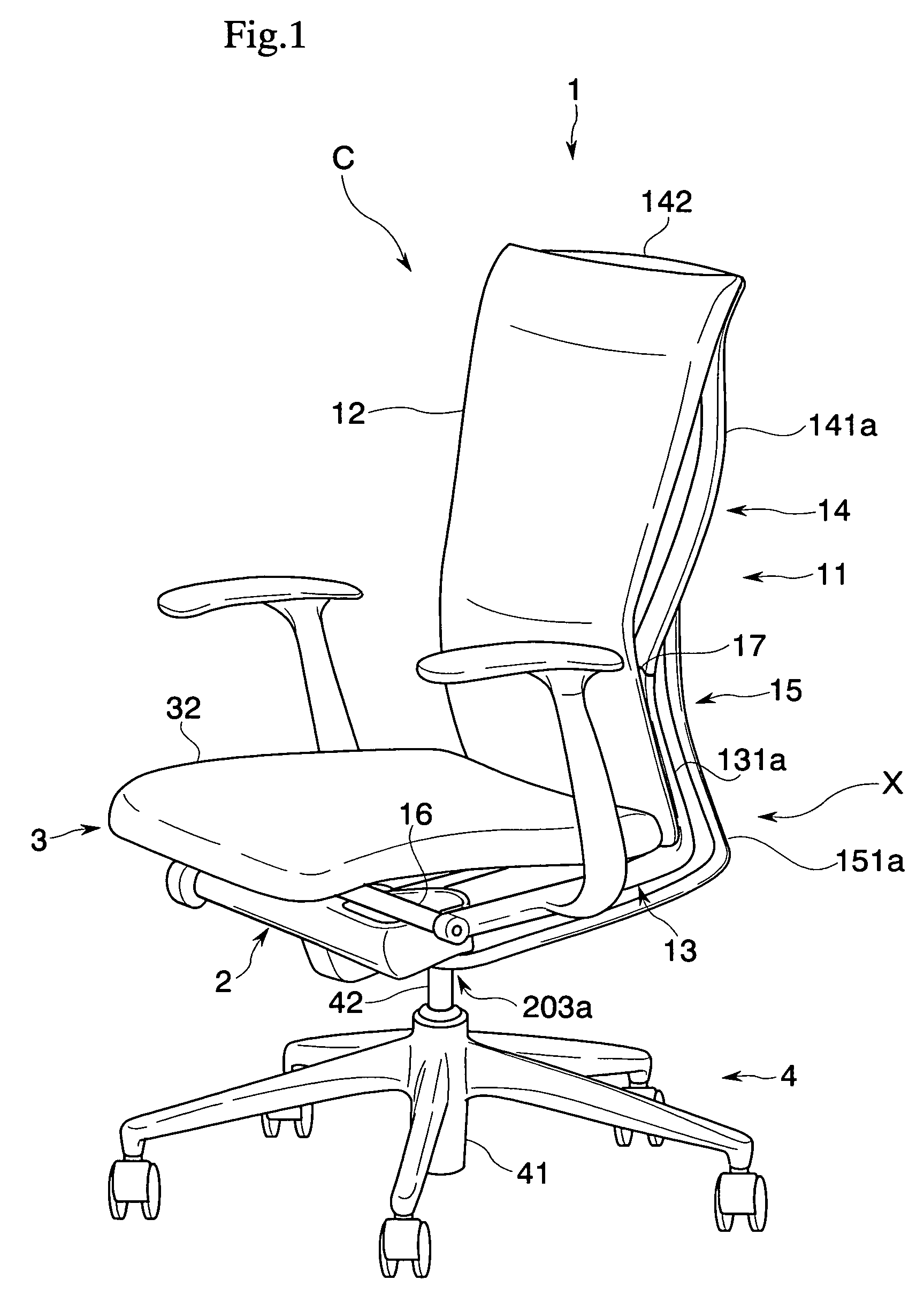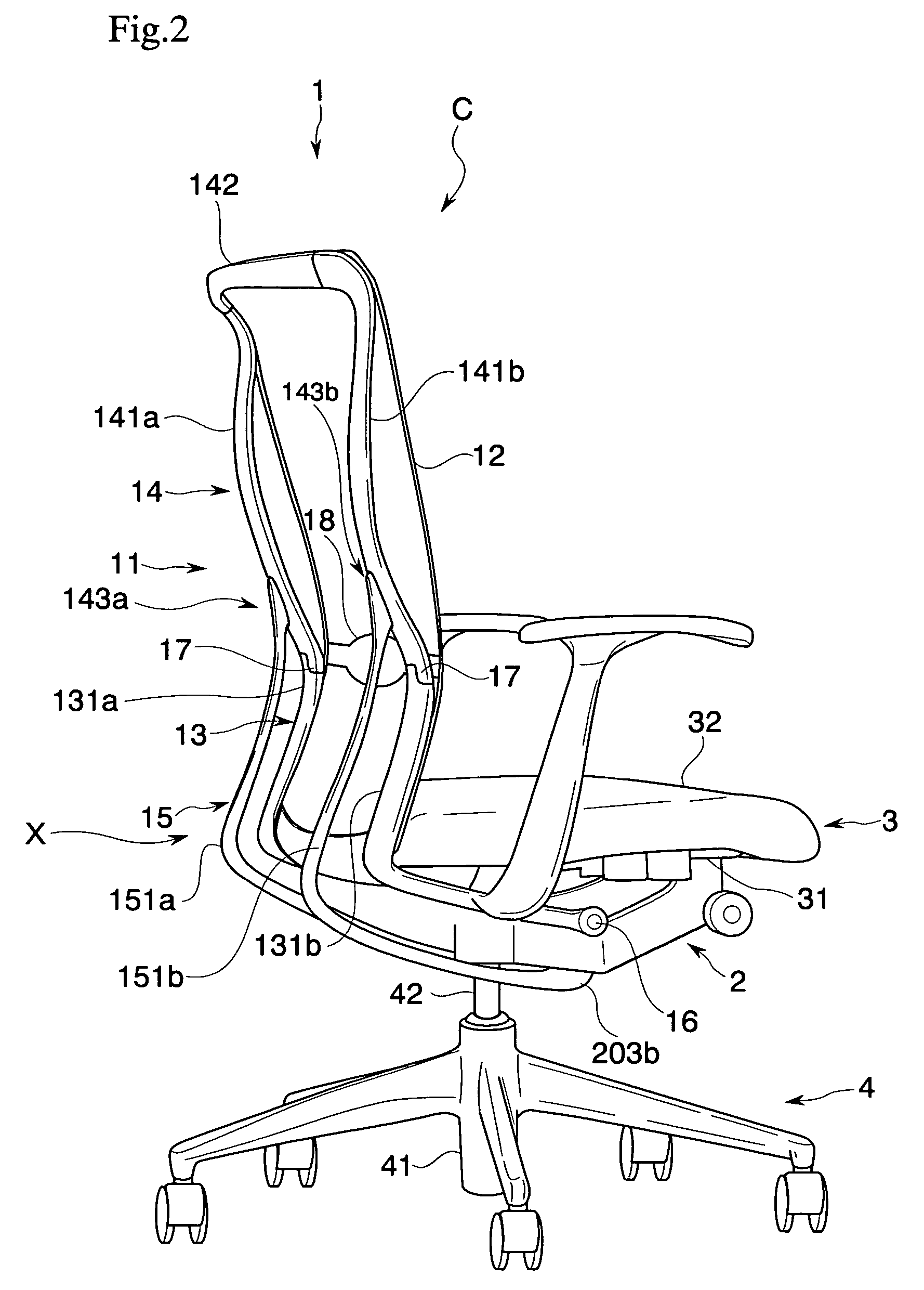Chair
a chair and frame technology, applied in the field of chairs, can solve the problems of not allowing the upper portion of the upper body to be stably supported, and the sitter feels insecure, and achieve the effect of reducing the sitter's stress
- Summary
- Abstract
- Description
- Claims
- Application Information
AI Technical Summary
Benefits of technology
Problems solved by technology
Method used
Image
Examples
first embodiment
[0043]A first embodiment of the present invention is described with reference to the drawings. A chair C of the present embodiment, as shown in FIGS. 1 to 5, includes a leg body 4, a base 2 supported by the leg body 4, a seat 3 arranged on the base 2, and a backrest 1 attached to the base 2 pivotally through a horizontal shaft 16, and is capable of synchronous rocking movement in which the seat 3 and the backrest 1 are interlocked and tilted rearward.
[0044]In this case, the chair C according to the present embodiment includes a lower frame portion 13 supported so as to be capable of rocking between a standing position (S) and a rearward tilting position (T) with respect to the base 2, and an upper frame portion 14 supported so as to be capable of rocking between a normal position (N) and a rear end position (E) with respect to the relevant lower frame portion 13. Furthermore, upper frame portion biasing means X that elastically biases the upper frame portion from the rear end portio...
second embodiment
[0071]A chair C2 according to a second embodiment of the present invention, as shown in FIGS. 10 to 15, is constituted such that upper frame portion biasing means X1 is made of a torsion coil spring 17sp, which is an elastic member, provided between the above-described upper frame portion 14 and lower frame portion 13, and includes repulsive force changing means X11, described later, that can change an initial repulsive force of the torsion coil spring 17sp by changing a locking position of the relevant torsion coil spring 17sp. Furthermore, a regulator 19 is mounted to provide a movement range setting mechanism A that can change a movement range of the upper frame portion 14 corresponding to the position of the lower frame portion 13.
[0072]Hereinafter, a constitution of the chair C2 according to this embodiment is described.
[0073]The regulator 19, as shown in FIGS. 10 to 12, has regulating members 191a, 191b and link elements 192a, 192b. The regulator 19 forms a substantially-L-sha...
third embodiment
[0087]Next, a chair C3 according to a third embodiment of the present invention is described.
[0088]In the chair C3 according to the present embodiment, as shown in FIGS. 18, 19, upper frame portion biasing means X2 is made up by providing the reactive force frame portion 15 made of reactive force frame elements A151a, A151b, which are resin springs, between the upper frame portion 14 and the lower frame portion 13, as an elastic member. Further, there is provided supporting position changing means Y1 capable of changing a supporting position where the reactive force frame elements A151a, A151b are supported, corresponding to the rocking movement of the lower frame portion 13. As a specific constitution of the supporting position changing means Y1, various mechanisms or structures such as position change by gear or position change employing a link mechanism can be employed.
[0089]With the above-described mechanisms or structures, the elastic repulsive force can preferably be applied t...
PUM
 Login to View More
Login to View More Abstract
Description
Claims
Application Information
 Login to View More
Login to View More - R&D
- Intellectual Property
- Life Sciences
- Materials
- Tech Scout
- Unparalleled Data Quality
- Higher Quality Content
- 60% Fewer Hallucinations
Browse by: Latest US Patents, China's latest patents, Technical Efficacy Thesaurus, Application Domain, Technology Topic, Popular Technical Reports.
© 2025 PatSnap. All rights reserved.Legal|Privacy policy|Modern Slavery Act Transparency Statement|Sitemap|About US| Contact US: help@patsnap.com



